Specializing in hurricanes and open and coastal ocean research
What does NOAA's Office of Oceanic and Atmospheric Research do for the nation?
The Office of Oceanic and Atmospheric Research (OAR) or "NOAA Research" provides the research foundation for understanding the complex systems that support our planet. We work in partnership with our partners within NOAA and beyond to provide better forecasts, earlier warnings for natural disasters, and a greater understanding of the Earth. Our role is to provide unbiased science to better manage the environment. NOAA Research explores the facets and trends of our environment that influence our future and play key roles in facing the new challenges of a rapidly changing society.
NOAA Research addresses the delicate balance of nature with the needs of society. Our science allows decision makers to make effective judgments in order to protect the public and conserve and manage research in these major areas - weather and air quality, climate, and ocean and coastal resources. And because everyone is a stakeholder or partner in environmental stewardship, our customers and partners are as diverse as our research. The results of our research have profound impacts on society.
A decade ago, it would have been difficult to envision the advances that have been made by NOAA Research. But today, we are brokers of independent scientific knowledge helping to complete the NOAA circle of research, prediction, and environmental stewardship.
Vision Statement
Societally relevant research that forms the basis for more productive and harmonious relationships between humans and their environment.
Mission Statement
To conduct research, develop products, and provide scientific understanding and leadership towards fostering NOAA's evolving environmental and economic mission.
NOAA Research History
The earliest version of NOAA Research began in 1946 with the establishment of the Central Radio Propagation Lab in Boulder, Colorado to focus on wartime radio communications. Over the next two decades, divisions emerged including severe storms and weather research, climate monitoring, and atmospheric modeling divisions, as well as Sea Grant, to address growing environmental research needs. In 1967, the organization was restructured into 13 Federal laboratories to address the need to investigate the physical environment as a whole rather than a collection of separate and distinct fields of scientific interest. NOAA began in 1970 followed by a naming of the research laboratories to the Environmental Research Laboratories (ERL). The current version of the NOAA Research laboratories evolved from the ERL labs, continuing a long tradition of research successes incubated over decades at Federal laboratories. In 2000, NOAA celebrated its 30th anniversary and the successes that led to its role as superior environmental stewards and leaders in modern environmental science.
Selected Research Accomplishments
- Enabled the National Weather Service to give a six-month warning of El Nino by using ocean observations, analysis, and climate modeling underpinning forecasts applied by agribusiness, water resources, utilities, and emergency managers, and 50 million East Coast residents.
- Developed models providing significant improvement in hurricane track forecasts used by local forecasters, emergency managers, and 0 million East Coast residents.
- Played a key role in understanding the cause of the Antarctic ozone hole and continues long-term monitoring, modeling, and analysis needed by policy makers who face decisions associated with the recovery of the ozone layer.
- Improved climate models to detect the effect of increased carbon dioxide on climate to understand and predict the impacts of greenhouse gases leading to global warming.
- Formed an intergovernmental alliance to provide training programs for more than 5,000 U.S. processing plants and 6,000 importers and international suppliers on new seafood handling and processing techniques.
- Supplied crucial information on the health of coral reefs and other marine organisms through the use of the Aquarius undersea laboratory.
- Taught marine safety and survival to more than 4,000 fishermen in 65 Alaskan ports, reducing fatalities by 50% over 10 years.
- Reduced the threat of aviation accidents because of in-flight icing on aircraft surfaces by developing a ground-based remote sensing system to detect hazardous icing from clouds.
- Led the development of environmentally responsible aquaculture technology, stimulating the start-up of two new companies, new products, and new jobs valued at more than $100 million and producing more than 100 tons of high-quality marine fish with minimal environmental impacts.
- Created international and interagency partnerships to observe and assess the dramatic environmental changes in the Arctic and their impact on U.S. weather and climate.
- Improved prediction of solar flares and other space weather events that can interfere with electric power distribution, high-frequency radio communications, satellite operations, astronaut protection, and national security.
Legal Mandates
Statutory authority for NOAA Research programs is varied. The Global Change Research Act of 1990 provided for the establishment of the U.S. Global Change Research Program with the NOAA Research Office of Global Programs holding responsibility for coordination of the interagency program. The National Weather Service Organic Act of 1890 provides non-expiring authority for NOAA's atmospheric research programs. The National Sea Grant College Program Reauthorization Act of 1998 authorizes the National Sea Grant College Program, the Knauss Fellows program and research on invasive species, oyster disease and harmful algal blooms through 2008. The Sea Grant program was originally authorized in 1966. The Nonindigenous Aquatic Nuisance Prevention and Control Act of 1990, and amended in 1996, provides expiring authority for NOAA to fund research, prevention and control activities that relate to aquatic nuisance species. Additional authorities for NOAA Research activities in areas such as coral reef conservation, harmful algal blooms, aquaculture, air quality, and aviation can be found in a variety of legislation for broader purposes.
Research Partnerships
NOAA Research customers and partners are as diverse as its research. The research results have profound impacts on many audiences who are affected by environmental management, policy and public safety. Specifically, NOAA Research customers include other components of NOAA, other federal agencies, state and local governments, universities and private industry, the general public and members of Congress who represent them, environmental non-governmental organizations with interest in our issues, and the global community.
NOAA Research partners provide additional scientific and technical expertise and represent a variety of university and other institutions. The most formal partnerships are Joint and Cooperative Institutes which are collaborative, long-term research partnerships established under agreements between NOAA and participating universities and non-profit research institutions with programs dedicated to oceanographic and/or atmospheric research, education or outreach.
Budget and Staff
The FY 2003 enacted budget for the NOAA Research budget lines totalled $374.8M, and its request for FY 2004 totalled $366.5M. NOAA Research employs 951 Federal and 911 Joint Institute or contract employees.
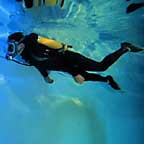
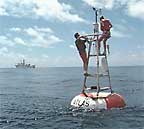
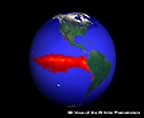
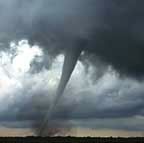
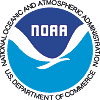 For
more information, contact:
For
more information, contact: